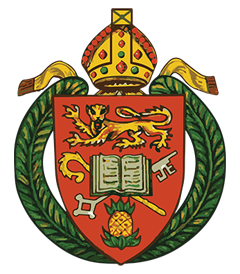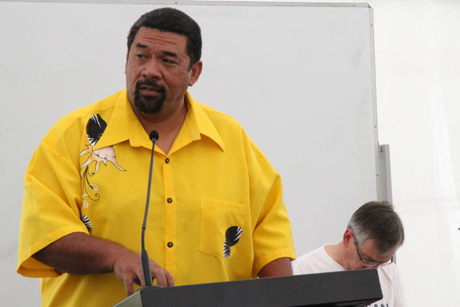
The Anglican Church of Aotearoa, New Zealand and Polynesia is to establish a “clear resilience strategy” to strengthen its response to future natural disasters in the Pacific islands. The move, adopted at the Province’s General Synod, came as researchers announced that five pacific islands have completely disappeared and a further six are experiencing “severe shoreline recession” as a result of rising sea levels.
Writing in the online Environmental Research Letters journal, scientists say that aerial and satellite photos taken between 1947 and 2014 of 33 Pacific islands show that “five vegetated reef islands . . . have vanished over this time period and a further six islands experiencing severe shoreline recession.”
They say that two villages that have existed since at least 1935 have been destroyed. “Rates of shoreline recession are substantially higher in areas exposed to high wave energy, indicating a synergistic interaction between sea-level rise and waves. Understanding these local factors that increase the susceptibility of islands to coastal erosion is critical to guide adaptation responses for these remote Pacific communities.”
This week, in a motion brought by Fe’iloakitau Kaho Tevi from the Diocese of Polynesia, the Province’s General Synod has resolved to devise a strategy to strengthen its response to natural disasters in the Pacific islands; including linking with other relief agencies and forming a cadre of “church community trainers” to teach parish youth groups about disaster preparedness.
Fe’i Tevi painted a bleaker picture than the scientists, telling the Synod that seven Pacific islands had been lost since the Paris climate change talks in December. “I want to tell you about Cyclones Winston and Pam, that members of this synod lived through, that my family and I lived through,” he said. “Imagine you are in a train station on the platform, a little way back from the edge of the platform. And a train goes through the station at 250km per hour.
“Imagine the force of that wind, the power of it passing by. The sound of that train to you is what Cyclones PAM sounded like. Except its winds reached 341km per hour. Thank God it was only six minutes of wind, if it had been ten, a lot more lives would have been lost.”
He told the synod that a more strategic and thought-through approach was needed to disaster response, saying that well-meaning offers of help aren’t always very helpful: “When a disaster happens, people act in sympathy they send second hand clothes, they send electrical kitchen appliances to places that don’t have electricity. They send high heels, to people who get them and don’t have anything to do with them.
“After the disaster in both Vanuatu and Fiji there was food past its use by date that came. These gifts sit in containers on wharves, and we are not too sure what to do with them. Sometimes we have to sell the clothes, to get some money for the things we need.”
Other responses had been more helpful. A priest from Christchurch – a city that had experienced its own disaster when 185 people died in an 2011 earthquake – sent a container “filled to the brim with building materials and second hands tools,” Fe’i Tevi said. “With that one container we were able to rebuild seven churches and also some vicarages.
“Perhaps we as the church need to shift from where we were at in terms of sympathy to towards partnership in action.”
- This article is based, in part, on a fuller report by Anglican Taonga about the General Synod debate.
The motion as agreed by the General Synod of Aotearoa, New Zealand and Polynesia
This General Synod / Te Hīnota Whānui 2016 therefore:
Mandates the Anglican Mission Board to work with other relevant service providers of the Church to:
a. Establish a clear resilience strategy that would strengthen the Anglican Church of Aoteraroa New Zealand and Polynesia’s response to any future natural disaster.
b. Develop clear strategies linking the Anglican Church of Aoteraroa New Zealand and Polynesia with disaster relief agencies to enable a cadre of Church Community trainers who are then tasked in training the youth groups of the parishes in disaster preparedness.
c. Develop a Diocesan Rapid Response Plan that would allow the Anglican Church of Aoteraroa New Zealand and Polynesia to respond in a timely and strategic manner to any community affected by a natural disaster in the Pacific Island Countries under its jurisdiction.
d. Link into the Disaster Risk Reduction networks with a view to creating partnerships with other like-minded bodies involved in the area of jurisdiction of the Church.
e. Create a conducive environment for longer term partnerships between parishes in New Zealand and those in the Diocese of Polynesia with the objective of developing longer term twinning parish partnerships on resilience and preparedness.
f. Engage and empower Three-Tikanga young people to be involved at every level of visioning, strategic planning and implementation around building resilience and disaster preparedness.
Invites AMB to consider this motion as a priority in its work plan for 2016-2017.
Mandates GSSC to monitor the implementation of this motion in close collaboration with the AMB and other relevant partners and report back on its implementation at the General Synod / te Hīnota Whānui 2018.
Reproduced from the Anglican Communion News Service
Please click here for the Diocese of Jamaica & The Cayman Islands Disaster Plan

